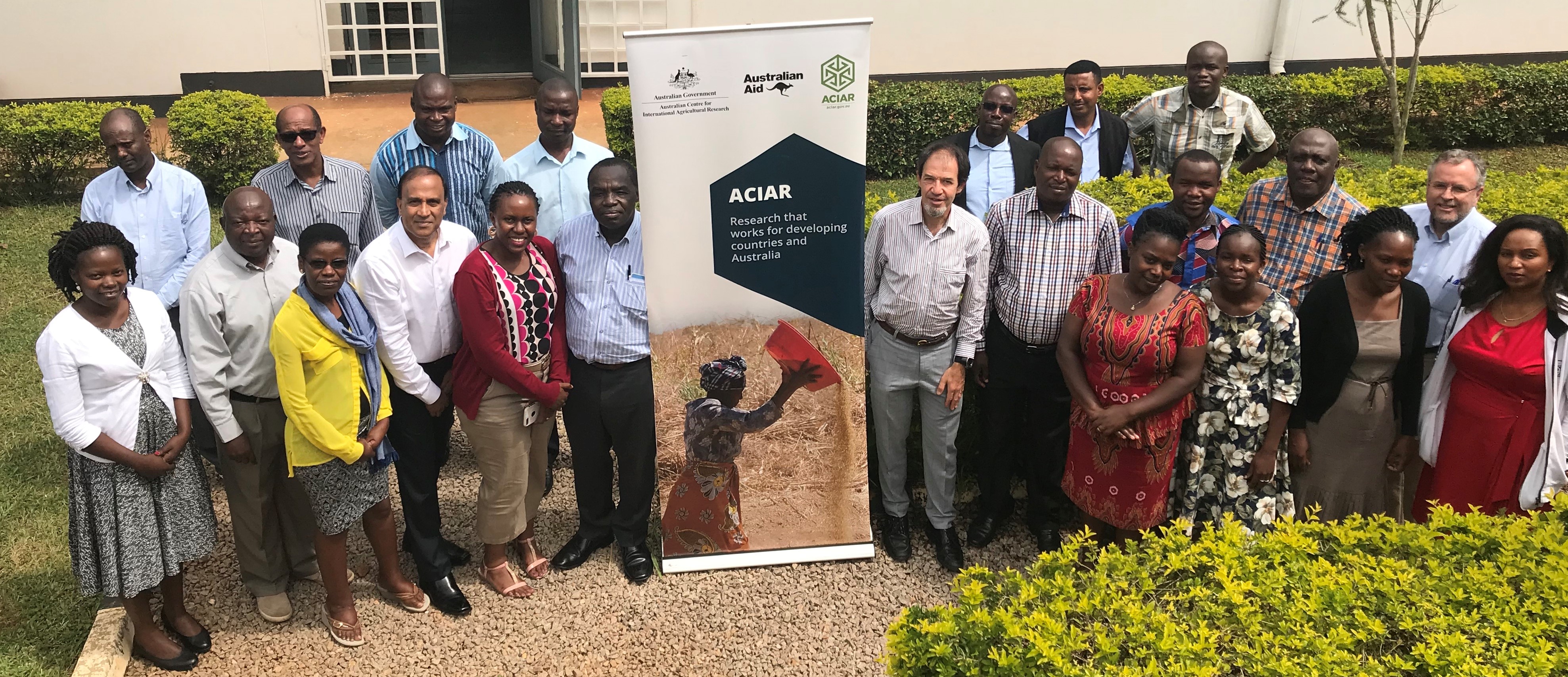KAMPALA, UGANDA, 10th, December 2019 – The Australian Centre for International Agricultural Research (ACIAR) has launched a new project in six countries in East Africa to improve common bean varieties and provide shorter cooking time, higher protein and increased nutrients (Iron and Zinc) to promote the health and well-being of small landholder African women, men and children.
The project, led by the University of Western Australia and implemented in Burundi, Ethiopia, Kenya, Rwanda, Tanzania, and Uganda, will apply innovative rapid methods of variety selection that have never been applied to bean breeding.
ACIAR Crops Research Manager, Dr. Eric Huttner said that even though the common bean is a staple in African diets, the attractiveness of the crop is hampered by the long cooking time.
“For the first time, we are making the cooking time a core objective of the crop improvement programs. In addition to promoting unique plant breeding methods, we are assisting the breeding programs in partner countries to modernize, using electronic data capture and data management through the breeding management system called BMS” said Dr. Huttner.
The common bean (Phaseolus vulgaris) is a major component of agricultural systems and diets of the urban and rural populations of East Africa, a source of protein and micronutrients iron and zinc. However, the consumption rate in East African countries has been low partly due to the long cooking time of between 1 to 3 hours. This is a disincentive to many smallholder households as it demands large amounts of resources (water, time, and firewood or charcoal as fuel) most of which are the responsibility of women. Burning solid fuel impacts the environment and imposes a health risk to women through exposure to smoke during cooking. Any reduction in cooking time would be attractive to consumers and the small processors supplying the urban consumers.
Through the collaborative research between scientists in Australia and in Eastern Africa, in the next five years, the project aims to reduce cooking time in common beans by at least 30% and increase iron content by 15% and zinc by 10% over current varieties. As such, the project has great potential of benefitting many players within the bean value chain, especially smallholder African farmers, as well as hoteliers, traders, processors, and consumers.
Speaking at the official opening and launch of the project, Dr. Stanley Nkalubo, Program Leader of Uganda’s National Crops Resources Research Institute Legume Program said beans are an important accompaniment to most staple food at the household level.
“It’s also an important source of household incomes to especially women and children and a foreign exchange earner currently bringing more than USD 80 million per year in Uganda,” said Dr. Nkalubo.
Through the project, gender-inclusive training programmes will be conducted on the new breeding methodology and varieties will be selected using participatory methods so that consumers’ preferences are included in the variety attributes. Within the five-year project life cycle, the project team is hopeful that improved varieties will be released and grown by farmers. Once widely adopted, varieties will deliver good nutrition to millions of Africans in the years to come.
The project is in partnership with the International Center for Tropical Agriculture and the Pan Africa Bean Research Alliance and implemented by the National Agricultural Research Institutes of Burundi, Ethiopia, Kenya, Rwanda, Tanzania, and Uganda.
This article was first published on the ACIAR Australia website

